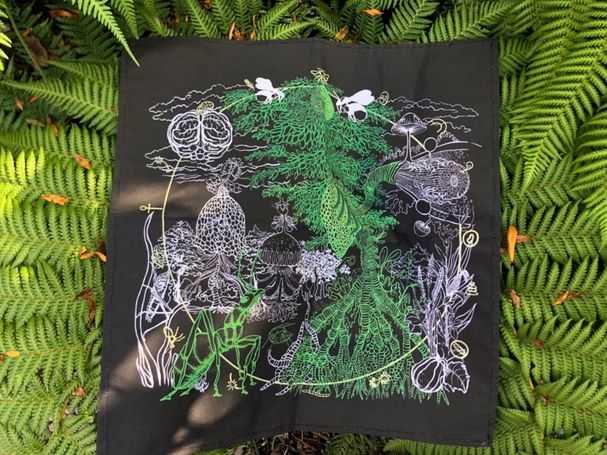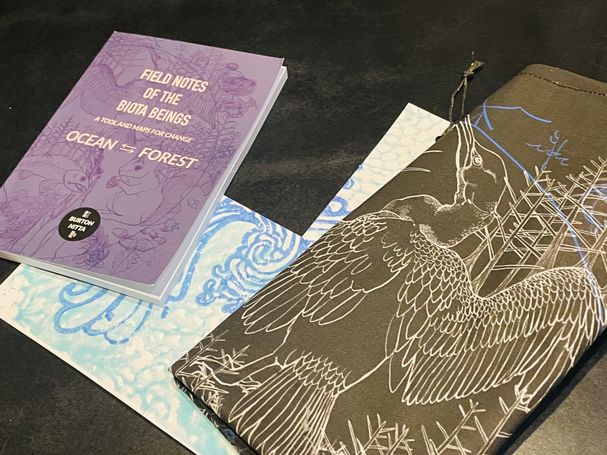Sky Alive (7 July 2025)
Summary
Sky Alive explores the sky not as an empty void but as a living aerobiome composed of airborne life—bacteria, algae, viruses—that form networks of interspecies intelligence. Drawing on Gaia theory, microbial intelligence, and ecological wisdom, the piece reframes the atmosphere as a sentient ecosystem whose wellbeing reflects our own. It invites readers to reconsider the sky as a shared, living domain in need of recognition and care.
Tags/Keywords:
- Aerobiome Intelligence
- Ecological Awareness
- Living Atmosphere
Is the sky healthy? What if the atmosphere possesses intelligence?
Works called Ecological Wisdoms in 2024, ask you to imagine a world where the environment, the planet, is alive and intelligent. We called this form of intelligence and the minds you find beyond human exceptionalism as Ecological Wisdoms.
Dorion Sagan and Lynn Marguils, who wrote the seminal text, Gaia and Philosophy, in 1984 informed the concept. In this, they present a non anthropomorphic version of intelligence. They refer to the oldest minds originating in bacteria and archaea, some of the first colonisers of the planet. These minds grew into super-brains through autonomous individuals, collectively sharing information about the environment, exchanging their experience and memories, to adapt and change according to external challenges. The interlinking of individual bacteria into colonies, facilitated by a bacterial language, mirrors the firing of neurons in our brains to form intelligence. These early minds gradually grew to cover the planet in the bacteriosphere and to form a super-brain. Sagan and Marguils suggest that the microbial intelligence that emerged was likely a precursor and the basis for our own human intelligence.
A series of former works in 2024 create vessels to host and nurture Ecological Wisdoms through networks of non-human minds. These emerge through a biological process called autopoiesis as introduced by Scientist Dr Predrag Slijepčević. (Slijepčević, 2023)
These minds are not just within a single species, but grow into networks of multi-species’ minds that are enabled through cross-kingdom languages. Together, species share knowledge, converse, and interact with each other. As such, the vessels we create are an invitation for minds to emerge through the living elements within them.
A lecture written and presented at the Royal College of Art in 2024 called Bringing to Life, outlined our research further and introduced ways we create and connect within Ecological Wisdoms.
The Sky Alive work, developed in 2025, applies the Ecological Wisdoms concept to whole dynamic systems as alive and in the possession of intelligence.
In this view, the sky is not void, or dead. It is alive as a biome of living things, including algae, bacteria and viruses. The entire atmosphere as a habitat for airborne life is called the aerobiome. The organisms that live in this ecological zone have a powerful influence on the world below. (Zimmer, 2025) Through the individuals who live in the aerobiome and their connections, we suggest they can gather into intelligence. Inspired by James Lovelock and the Gaian system, the atmosphere is alive, in parts and building to an entity. When viewed from this perspective, the sky has its own set of rights.
Sky Alive challenges us and how we behave. For a long time, people have considered the sky as a convenient void for pumping waste gases, a dead space beyond the consequences of our actions. Fumes and plumes of CO2 and smoke untethered from combustion and extraction into an abstract ‘away’. However, as we encountered in a previous work called Instruments of the Afterlife, the ‘away’ doesn’t exist. We discovered that on an interconnected planet, things can come back to us in surprising ways.
Instead of the sky as a place of ‘not our problem’, on the contrary, this is our problem. And the sky, like Gaia, can be vengeful.
Robert Macfarlane, author of Is a River Alive?, brings us the idea that a river is a living entity. He reminds us that globally indigenous perspectives treat rivers as alive.(Macfarlane, 2025) As living, they can also be killed and die, often at the hands of human pollution and disturbance. When the river is dead, the indicators of absence of life, smell, or complete disappearance are obvious.
Dissimilar to a river is knowing whether the sky is ‘well’. Its health is hard to fathom. We cannot easily gauge the degradation of the sky.
However, Sky Alive gives a voice to the dynamic and borderless system that the sky hosts. If we see meteorological systems, the weather and wider consideration of the climate as examples of the Sky’s wellbeing, what is it saying? As temperatures rise, extreme weather events gain in frequency, do they indicate the degradation of the living sky?
Sky Alive creates systems to interact and give voice to the living atmosphere. The works consider the sky as an entity and an aerobiome full of living organisms. These can shape what happens in this illusive airborne place, such as cloud formation, which exert powerful influences on the surface of the Earth below.
References:
James Lovelock (2016), Gaia, A New Look at Life on Earth (Oxford Landmark Science). OUP Oxford. 28 April 2016
Dorion Sagan and Lynn Marguils (2023, First published 1984), Gaia and Philosophy, Ignota. (link here)
Robert Macfarlane, (2025) Is a River Alive? Penguin, 1 May 2025
Predrag B. Slijepčević (2023), Biocivilisations, Chelsea Green, London, 2023
Carl Zimmer (2025) A Brief and Amazing History of Our Search for Life in the Clouds. Smithsonian magazine, 25 February 2025. Available at: https://www.smithsonianmag.com/science-nature/a-brief-and-amazing-history-of-our-search-for-life-in-the-clouds-180985981/ Last accessed: 7 July 2025.
* As an Amazon Associate we earn from qualifying purchases.




